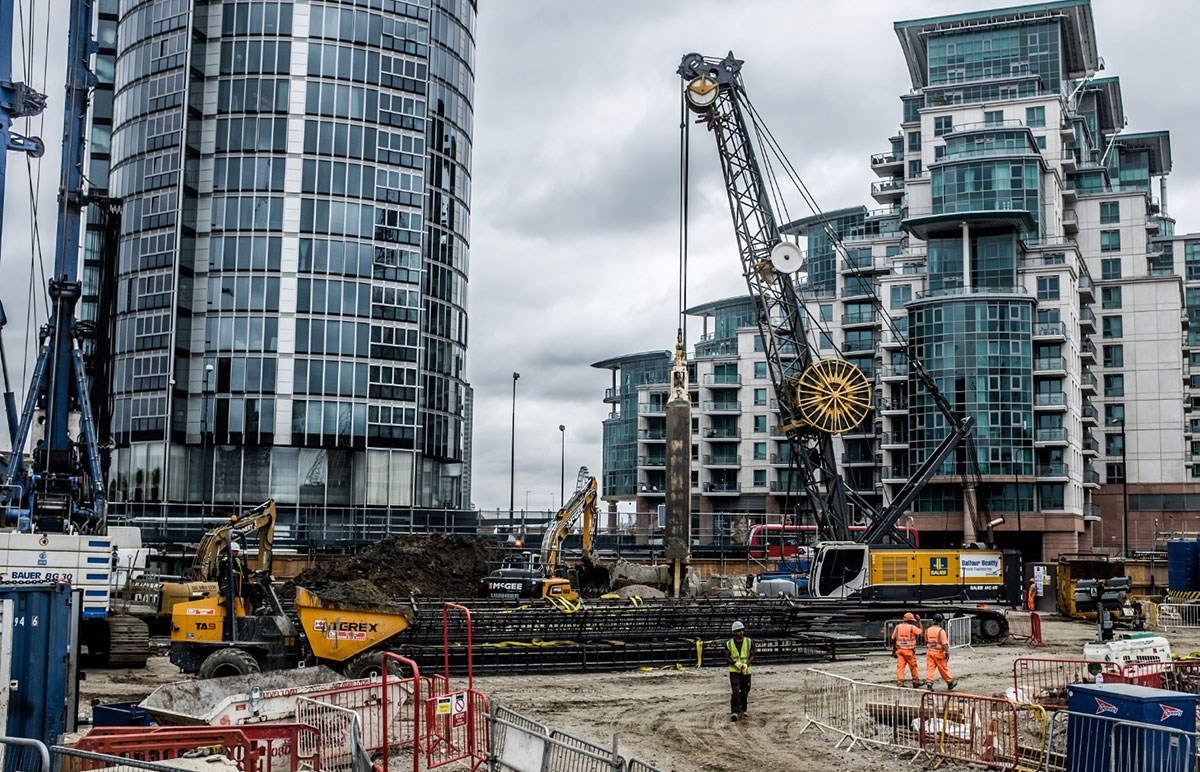The smart Trick of Geotheta That Nobody is Discussing
The smart Trick of Geotheta That Nobody is Discussing
Blog Article
About Geotheta
Table of ContentsUnknown Facts About GeothetaGeotheta Fundamentals ExplainedNot known Incorrect Statements About Geotheta The Greatest Guide To Geotheta
They team up with civil designers, architectural engineers, designers, and other professionals to incorporate geotechnical factors to consider right into the general project design and construction procedure. This calls for reliable team effort, sychronisation, and communication to make sure that the geotechnical facets line up with the project goals and meet governing requirements.Mining & Products Design: Principles of boring, infiltration rates, and factors affecting the option of boring technique. Blowing up techniques in surface and below ground functions. Mechanical and continuous approaches to fragmentation, including longwall shearing and fullface boring.
Modelling of fragment and bit dimension distributions; comminution as a transfer feature. Comminution technology: crushing, grinding, dimension category. Integrated evaluation of fragmentation and comminution operations. Used by: Mining & Products Design.
Little Known Questions About Geotheta.
Bachelor's level programs in civil, geotechnical, geological, and environmental engineering generally last 4 years and consist of basic education programs in English, social science, and the liberal arts, as well as programs in advanced maths, architectural geology, and fluid mineralogy. (https://www.provenexpert.com/geotheta/)
Geotechnical design includes the analysis of the dirt and rock conditions at a certain site, and their implications for the advancement of that site. As a lot of frameworks rely on the ground for support, it lacks surprise that a detailed understanding of the ground conditions, and the suitability of foundation systems, are crucial to the lasting stability and efficiency of the building or framework.
Being experts in the investigation of geological formations and ground practices, geotechnical engineers do scientific investigations and testing to comprehend the effect these geological developments may have on the style and building of building, civil and framework jobs. This know-how is important for the style and building of buildings, roadways, passages, dams, bridges, and water supply and sewer system.
The geotechnical group at Douglas Partners regularly seek advice from engineers, layout designers, programmers, and home builders to make suggestions on design and development proposals to make certain that the built frameworks are appropriately designed for the ground problems. For instance, the layout of footing systems needs to consider the weight of the structure, the capability of the ground to support that weight along with activity resistances and reliable building and construction.
Some Known Details About Geotheta
This task is substantially simplified by the use our Douglas Map geospatial system that makes this information readily available in a very easy to make use of internet internet browser interface. A geotechnical designer will certainly route the exploration of boreholes and examination pits to collect dirt and other examples, and additionally examine surface features and ground exposures to develop a geotechnical model of the subsurface conditions.
Relying on the project type and ground problems encountered, research laboratory testing may to name a few things analyze strength, compressibility, reactivity and/or leaks in the structure of soil and rock samples. After this data is collected and looked at, the results are utilized for a geotechnical version of the website, which is commonly offered as areas throughout the site.

A geotechnical examination by nature can just examine the ground problems at the places drilled or dug deep into. All-natural variations in soil and rock conditions can happen throughout a website and between test places. It is consequently excellent practice that the geotechnical engineer be kept throughout building and construction of the job to offer on-site confirmation that the ground problems come across are consistent with the assumptions and suggestions offered in the geotechnical investigation record.
Geotheta Things To Know Before You Get This
Geotechnical engineers use their in-depth expertise of dirt and rock to analyze risk and fix problems on varied facilities projectsGeotechnical engineering is a specialist branch of civil design which checks out the practices of planet products and the application of soil and rock auto mechanics. Consulting Engineer. As a geotechnical engineer, you will examine the physical, mechanical and chemical residential or commercial properties of soil and rock in order to develop structures, retaining structures and earthworks
Geotechnical visite site design is closely linked to and overlaps with, both engineering geology and ground engineering - https://flossy-rotate-3d1.notion.site/Why-Geotechnical-Engineers-are-Vital-for-Your-Construction-Projects-7c147cf012a34d1abe5134afbabc811f?pvs=4. It's feasible to specialise in geotechnics or help a geotechnical firm but be referred to as a design geologist or a ground engineer. As a geotechnical designer, you'll require to: construct and preserve partnerships with clients and various other professionals entailed in the site, throughout each projectmaintain security requirements on site bear in mind cost effects when you make recommendationsstudy geological maps and airborne photographs from a series of sources and from various time periodsexamine building prepares to see just how viable they are based upon your understanding of the siteinvestigate threats or geological dangers for the sitesearch for eco sensitive features, such as landfill start to establish factual and expository ground modelsplan area investigationsdrill and evaluate examples of bedrock, soil, groundwater and additional products supervise other professionals on sitesolve technological concerns as they develop, such as unforeseen structures at drill sitesmonitor problems during and after construction to ensure frameworks are secure in the brief and lengthy termadding data gathered on site to your initial researchcreating geotechnical estimations, illustrations, and two or three-dimensional computer designs translating the datamaking recommendations about the recommended use of the site

Report this page